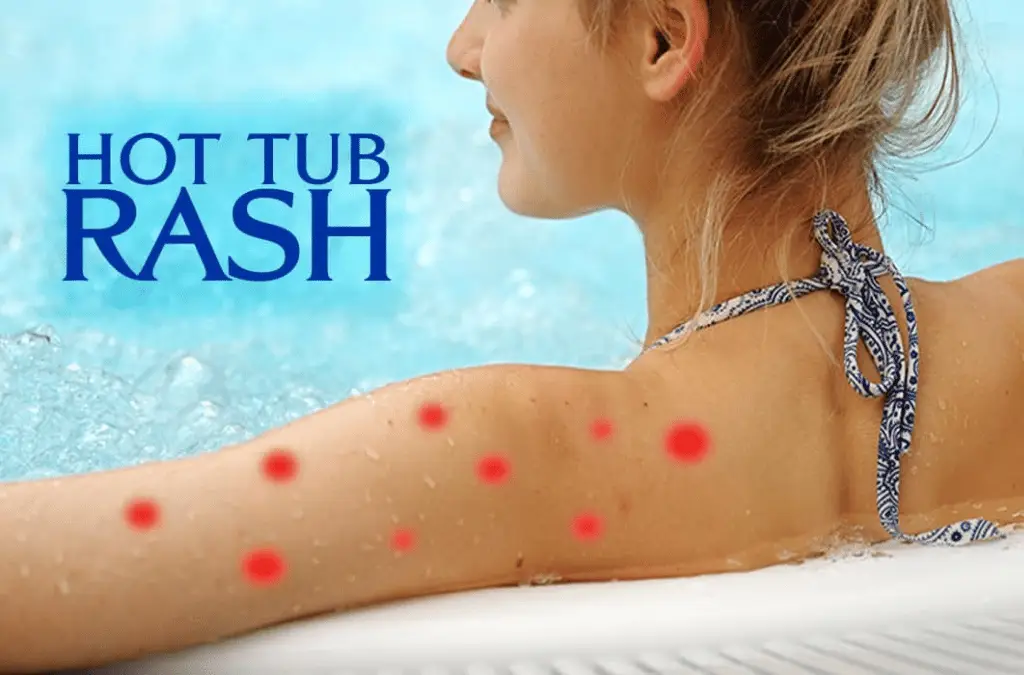
Hot Tub Rash
Pseudomonas is a common problem in warm water pools and spas in particular. The most common symptom is an itchy rash. It is often confused with bug bites (often complaints are received that a hotel has “bed bugs”), chicken pox, and other types of rashes. It can be much more serious including severe rashes requiring hospitalization, ear infections, urinary and vaginal infections, and probably most serious is pneumonia. Often mistaken for “scale” or slime, it is most commonly described as toilet paper syndrome because it is a whitish, mucous-like substance that looks like shredded tissue paper when floating in the water. Read on to discover the different causes of Hot Tub rashes.
Temporary Pseudomonas Contamination
There are two kinds of Pseudomonas outbreaks. Most often seen is what some call transitory Pseudomonas contamination of a spa. About 15% of the population has Pseudomonas as a naturally part of the flora and fauna of their skin. When a “party” occurs in the spa, all the disinfectant is used up and the organism is spread to everyone in the tub from the carrier. Because the hot water opens up the pores, the Pseudomonas can enter the pores, “follicles”, in the skin, even of the carrier, and will cause the Pseudomonas Folliculitis problems. Once the party is over, everyone gets out, the spa can reestablish the disinfectant residual and the organisms are killed before setting up residence in the spa. If not then….
Persistent Pseudomonas Contamination
The second type of problem occurs when Pseudomonas bacteria establish themselves in your spa. If the disinfectant level isn’t restored promptly, the bacteria can thrive in the water, posing a more serious maintenance challenge. Once it establishes itself, Pseudomonas forms a protective slime layer to shield against chlorine, often preferring surfaces in low-flow areas. Sometimes, it accumulates in such quantities that it can be scooped out by hand. Typically, super-chlorination can eradicate most infestations.
Stop that Itch!
To eliminate this issue, one should drain the spa after exposing it to high chlorine levels for several hours. Then, use a 200-ppm chlorine solution to thoroughly brush and scrub the spa, breaking up the protective layer. Super chlorination becomes necessary once the issue is established. Consistent disinfectant maintenance is crucial to prevent its recurrence, ensuring it doesn’t become a breeding ground for bacteria transmitted from person to person. Regularly monitor sanitizer levels, especially with frequent spa usage, to maintain optimal conditions. Finally, relax and enjoy your hot tub—you’ve earned it.
At Blackthorne Spas, we have numerous models in stock to choose from. Our expert staff can help you find the perfect hot tub for your needs and budget. Contact us today to learn more!

